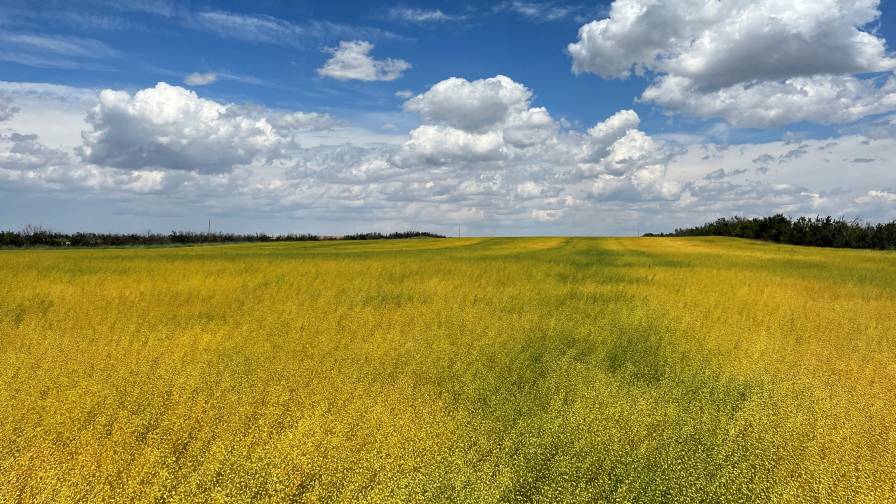10 Questions With DuPont
With such uncertain market conditions, FCI decided to initiate a series of Q&As with basic manufacturers to determine how the global economy and demand is affecting their businesses. Edward Makowski, director of Strategic Planning and Six Sigma for DuPont Crop Protection, says opportunities exist even in the most challenging markets.
1. How are you adapting business practices or operations to compensate for lower demand for crop protection products?
Although 2009 will certainly be a dynamic and challenging year, I think we will still see demand grow for crop protection products, although at a much-reduced pace versus 2008.
We are also constantly looking at ways to streamline our supply chains and ensure our customers have the right product at the right place at the right time, and that work will continue.
2. Is the tightening of credit markets affecting the way DuPont conducts its business? Does tight credit affect the way your customers do business?
While production agriculture has been somewhat insulated from the general economic downturn, the current financial crisis is too pervasive to leave crop protection untouched. As always, many growers will need credit at the beginning of the cropping cycle to establish crops and will make decisions based on their ability to find that credit. Early indications are that growers are cautiously optimistic, and we are keeping a close eye on how liquidity and credit might impact their decisions for the coming year.
3. Have you created any programs that might help your customers, such as deeper lines of credit or longer billing cycles?
We already have several programs in place that assist retailers and growers. A variety of financing and cash incentive programs are in place around the world. Other innovative programs include an exclusive credit card program in Argentina and the DuPont Crop Protection Plus product cost replacement program in the United States. The Crop Protection Plus program provides growers who purchase and apply qualifying products with product replacement credit if their crop is destroyed by conditions such as drought, freeze or hail.
4. What can crop protection manufacturers and distributors do to move inventory and maintain cash flow at a time when demand is low?
Crop protection products provide substantial value to growers yet comprise a very small portion of all input costs. Rising crop nutrient prices, fluctuating energy prices and increased labor costs have been difficult to control, while the return on investment from protecting crops against weeds, disease and insects will continue to be significant for growers in nearly every segment.
With support from distributors and retailers who share our concern for anticipating grower needs and providing innovative solutions, we see fewer ups and downs in demand related to short-term economic shifts.
5. What are the geopolitical changes shaping crop protection businesses right now? Do these issues also affect your customers’ businesses?
The current financial situation is perhaps the most top of mind issue facing our industry today. We would be naïve to assume this will have no impact on the agricultural market; however, the demand for food, feed, biofuels and fiber continues to rise. Early indicators show more stability in agriculture than many other markets, so we are finding that our customers are approaching this planting season with cautious optimism.
Another key trend shaping the global marketplace today is increasing consumer demands for new, more sustainable ways to meet the growing need for better quality food, feed, fuel and fiber. You can see evidence of this trend in the new regulatory requirements in the EU, North America and around the world. Our focus on developing novel chemistries that provide great utility and reduced environmental impact is really paying off in this area. Our sulfonylurea herbicides led the charge more than two decades ago with their incredibly low use rates and reduced impact on the environment.
Growing demand for renewable fuel and fiber is shaping new public policies and new investments around the world. The US commitment to ethanol in biofuels and activities in Europe to develop biobutanol are just a few examples. There are great opportunities for our customers, and agriculture as a whole, to contribute to these advances.
6. What markets are creating the greatest opportunities for crop protection growth? Why?
Despite the recent softening in commodity prices, the agricultural economy remains relatively strong. Carryover stocks are still somewhat low, and we believe the underlying fundamentals of a growing world population, plus dietary shifts toward higher fresh fruit, vegetable and animal protein consumption continue to support strong growth in the ag economy. We expect demand growth will continue to be strong in China, Brazil and Eastern Europe, albeit at a slower rate than we’ve seen in recent years. And the drive toward renewable fuels, including the ongoing US mandate for ethanol inclusion in gasoline, will continue to help support corn prices.
7. Are you unveiling any crop protection products in 2009?
This year we are continuing to introduce insect control products powered by our newest active ingredient, Rynaxypyr, around the world. DuPont Altacor and DuPont Coragen for fruit and vegetable are the primary products that contain this revolutionary molecule.
In corn and soybeans, where rapidly changing weed control needs are presenting new challenges to growers, we are extending our crop protection portfolio with unique products that will provide longer-lasting control and help manage weed resistance. In particular, we are entering the final stages of development of new corn and soybean herbicides to complement the Optimum GAT trait.
8. What molecules do you have in the pipeline for the next few years?
Close behind Rynaxypyr is Cyazypyr, an exciting active ingredient we are developing that is expected to have great value in cross-spectrum insect control products. Also moving into the next stages of development this year are two new fungicides and a new herbicide for vegetative management, pasture and rangeland and other land management uses.
9. What is your strongest R&D focus?
Looking to the future, our crop protection research and development work is focused on the discovery and development of sustainable new products that advance agriculture to meet grower needs for long-term productivity and profitability. In the shorter term, we strive to support and renew our existing product line in a way that continues to provide new and exciting answers to today’s pest control issues.
10. What products are coming off patent this year? What markets are they most likely to influence?
Some of our insect control products have been off patent in markets around the world for over a decade, and our sulfonylurea herbicides are beginning to come off patent in the North America and European row-crop markets. This is balanced by renewal in the form of new products and new uses for existing products that continue to add value to grower operations by providing answers to increasing consumer demands for sustainable ways to increase the quantity of better quality food, fuel, feed and fiber.






